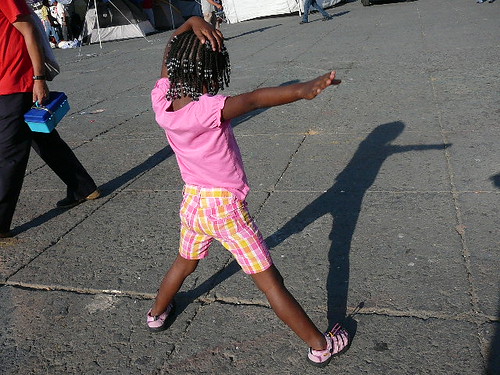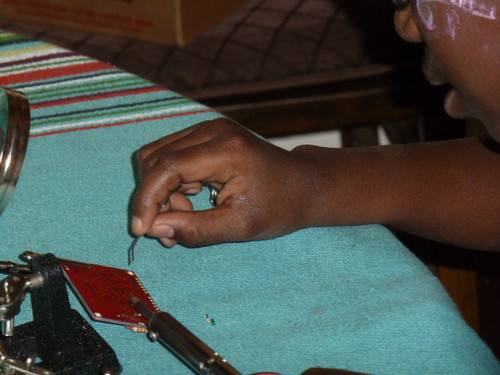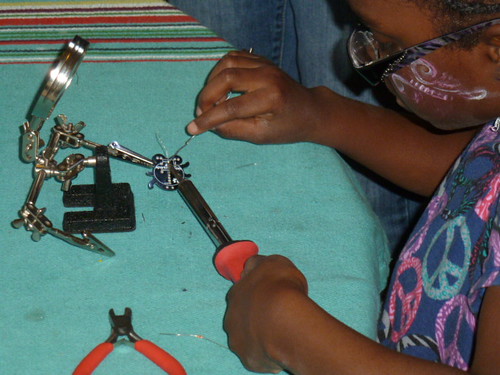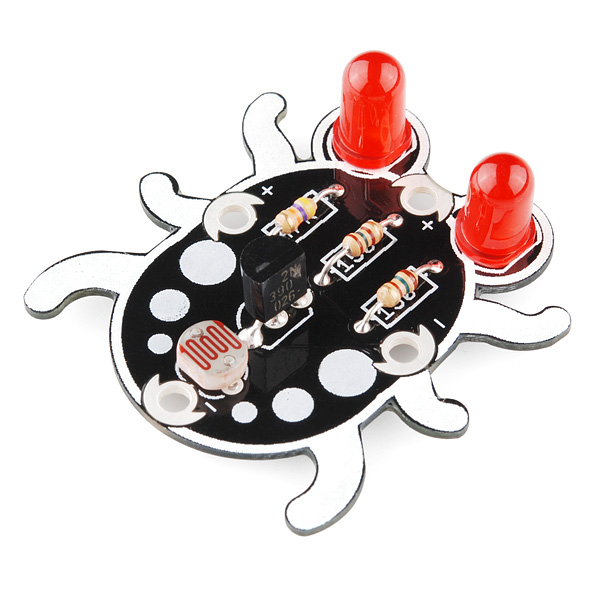Atrocities during Mexican American War
First, I've understood since adulthood that the Mexican-American war pushing Texas' boundary from the Nueces River down to the Rio Grande was a largely extra-legal land grab, and from my travels in Mexico I understood the level of latent antipathy and conflicted attitude toward the United States which still lingers from the US invasion 150 years ago. But I hadn't realized before reading this book review from Foreign Affairs the sorts of atrocities and routine war crimes which accompanied the US invasion, a misadventure Ulysses S. Grant called America's "Wicked War," from which the title of the book is taken. Wrote the reviewer, "Among the many merits of The Wicked War, two are especially impressive: Greenberg’s use of personal testimonies and her portrayal of atrocities committed by U.S. forces -- events that have been little reported, even by Mexican writers." Here's an especially notable passage:
Greenberg uses a first-person account, for example, to describe a massacre of Mexican civilians by volunteer soldiers from Arkansas: "The cave was full of volunteers, yelling like fiends, while on the rocky floor lay over twenty Mexicans, dead and dying in pools of blood, while women and children were clinging to the knees of the murderers and shrieking for mercy. . . . Nearly thirty Mexicans lay butchered on the floor, most of them scalped. Pools of blood filled the crevices and congealed in clots."That's what you call spillover violence!
Such events troubled many U.S. officers, including Scott. In an 1847 letter to the U.S. secretary of war, Scott reported that men under Taylor’s command had committed crimes that were “sufficient to make Heaven weep.” U.S. militiamen had raped mothers and daughters in the presence of their tied-up husbands and fathers, he wrote, “all along the Rio Grande.” Yet as U.S. forces readied their attack on Veracruz, Scott denied requests by European consuls to allow women, children, and the elderly to evacuate the city. He would mercilessly bombard the city, destroying houses, churches, and hospitals. In a letter to his wife, the U.S. Army captain Robert E. Lee, who was at Veracruz and who would later lead the Confederate army during the Civil War, wrote that his “heart bled for the inhabitants.”
Greenberg argues that U.S. atrocities in Mexico echoed those of the Indian Wars of the 1830s, including a massacre of Cherokees in 1838, in which Scott participated. “When faced with a ‘treacherous race,’ the rules of war did not apply,” Greenberg writes of the attitude of American commanders. The U.S. public seemed to agree. The New York Herald predicted that “like the Sabine virgins,” Mexico would “soon learn to love its ravisher.” [Ed. note: Ugh!] But the love never came, the slaughter continued, and Mexican troops made the American invaders pay dearly in blood. Although estimates differ, Greenberg reports that the United States sent 59,000 volunteers and 27,000 regular troops to fight the war; nearly 14,000 of them died. Of course, the price was even higher for Mexican citizens; estimates suggest that as many as 26,000 died during the war.
If, as the reviewer suggested, "Every country sooner or later confronts the sins of its past," then these are among the sins America is paying for now when it comes to highly politicized conflicts over Latin American immigration and the national quandary over how to treat illegal immigrants, who are the poorest, most exploited strata of the state and nation's labor pool and yet essential to key industries like agriculture and construction. As with slavery, true "reparations" for the sort of historical carnage described above is impossible. But the history deserves to be remembered.
I also recently ran across the stories of two massacres from my own neck of the woods in northeast Texas.
Cherokee massacres
I'd never heard the story of the Republic of Texas wiping out the Cherokee Indians in northeast Texas referenced above (at least one person participated in both events), but the Texas State Historical Society has a brief description. For context, "on February 23, 1836, a treaty made by Sam Houston and John Forbes, who represented the provisional government, gave title to the lands between the Angelina and Sabine rivers and northwest of the Old San Antonio Road to the Cherokees and their associated bands." However, "The treaty was tabled by the Texas Senate on December 29, 1836, and was declared null and void by that body on December 16, 1837, despite Houston's insistence that it be ratified."
As a result, "The Córdova Rebellion in August 1838 caused Thomas Jefferson Rusk to march on the Cherokees in an effort to intercept Vicente Córdova; but Córdova did not seek shelter among the Cherokees, and Rusk returned to the settlements. On October 16, 1838, Rusk, with 230 troops, pursued a band of Kickapoos, destroyed their village, and killed eleven warriors, including one renegade Cherokee. There were sporadic raids by the Indians during the fall of 1838 and spring of 1839." Then, conveniently for the new republic's president, Mirabeau Lamar, in May 1839 a letter was discovered "in the possession of Manuel Flores exposing plans by the Mexican government to enlist the Indians against the Texas settlers," giving the Republic the perfect excuse to press for the Cherokee's complete expulsion, which Lamar did with great popular support. Here' TSHA's description of the denouement:
In July 1839, Kelsey H. Douglass was put in command of approximately 500 troops under Edward Burleson, Willis H. Landrum, and Rusk, and was ordered to remove the Indians to Arkansas Territory. The army camped on Council Creek, six miles south of the principal Cherokee village of Chief Bowl and dispatched a commission on July 12 to negotiate for the Indians' removal. The Indians agreed to sign a treaty of removal that guaranteed to them the profit from their crops and the cost of the removal. During the next two days they insisted they were willing to leave but refused to sign the treaty because of a clause that would give them an armed escort out of the republic. On July 15 the commissioners told the Indians that the Texans would march on their village immediately and that those willing to accept the treaty should display a white flag. Landrum was sent across the Neches to cut off possible reinforcements, and the remainder of the army marched on the village. The battle of the Neches occurred a few miles west of Tyler, in what is now Henderson County. By sundown three Texans had been killed and five wounded; the Indians had lost eighteen. The Indians fled, and Douglass made camp. Pursuit was begun on the morning of July 16. A scouting party under James Carter engaged the Cherokees near the headwaters of the Neches River at a site now in Van Zandt County. The Indians sought shelter in a hut and the surrounding cornfields but were forced to abandon them after Carter was reinforced by the arrival of Rusk and Burleson. After thirty minutes of fighting the Indians were forced to the Neches bottom, where Chief Bowl was killed and a number of warriors were lost. After the last fighting near Grand Saline, it was estimated that more than 100 Indians had been killed or wounded in the engagements.TSHA dubs this as the "Cherokee War" but it reads to me more like a description of an old-school Russian pogrom against Jews - essentially an act of state-sponsored genocide.
On July 21 the Texans marched toward the headwaters of the Sabine River along the route taken by the fleeing Indians. Numerous huts and fields were destroyed that afternoon, and several villages and more than 200 acres of corn were burned on the morning of July 22. The destruction continued during the pursuit of the Indians, which was not abandoned until July 24. Most of the Indians fled to Cherokee lands outside the republic. During the winter a small group under Chief Egg and John Bowles, son of Chief Bowl, attempted to reach Mexico by skirting the fringe of white settlements. Burleson, on a campaign against the Plains Indians, intercepted the Cherokees and attacked them near the mouth of the San Saba River on December 25, 1839. Egg and Bowles and several warriors were killed, and twenty-seven women and children were captured. This was the last important action against the Cherokees in Texas.
Slocum massacre
Finally, Jonathon Tilove at the Austin Statesman has an excellent story (Dec. 27) about a debate in Anderson County over whether an episode dubbed the "Slocum massacre" should be memorialized with an historical marker. Though I grew up in the next county, I'd never heard of the Slocum massacre:
in which a marauding mob of local whites went on a rampage, killing blacks pell-mell, and sending much of the local African-American population fleeing for their lives, abandoning homes and property, never to return.That terrible episode sounds eerily similar to the earlier Cherokee land grab a couple of counties over, and for that matter is similar in theme to the larger-scale land grab from the Mexican American War, though that of course played out on a grander scale and the earlier episodes were sponsored by nation states, not a mob. Whether or not that distinction matters, given that authorities in Slocum tacitly approved after the fact by failing to prosecute the perpetrators, Tilove's account of the Slocum massacre reads like nothing more nor less than an unregulated episode of populist genocide.
“Men were going about killing Negroes as fast as they could find them. And, so far as I was able to ascertain, without any real cause. There was just a hot-headed gang hunting them down and killing them,” Anderson County Sheriff William H. Black told The New York Times the day after the July slaughter. “I don’t know how many there were in the mob, but I think there must have been 200 or 300. Some of them cut the telephone wires. They hunted the Negroes down like sheep.”
Even in an era when raw racial violence was common, what came to be called the Slocum Massacre was noteworthy, both for its scope and for the aggressive if ultimately futile efforts by white officials to bring the perpetrators to justice. But it quickly slipped from national headlines and, in the century that followed, largely disappeared from historical memory.
Regardless, the Anderson County Historical Commission and the Commissioners Court oppose creation of an historical marker because:
The Massacre of 1910 was an atrocity committed by a group of ignorant white men. Those men should have paid for their crimes. This event should never be forgotten in the history of Anderson County. However, it is the general view of the Historical Commission that historical markers should represent people, places and events that had a positive influence on our community. This event absolutely did not have a positive influence on anyone and it is a scar to the community of Slocum.A county commissioner, though, offered a more practical, if self-serving motivation for refusing to acknowledge this dark history: “If I say, ‘OK, we’re going to recognize that this did happen, somebody of interest is going to take it further, and they are going to say, ‘The county even recognized it, and we want our land back.’”
I consider the idea that only historical stories which have a "positive influence" should be represented and not the darker manifestations of human behavior to be an absurdity bordering on an abomination. Anyone promoting such opinions is not an historian but a propagandist. Those who do not learn from history are doomed to repeat it, the saying goes, and everyone learns more from their mistakes than their triumphs. To me, these stories are critically important to remember because they remind us of the capacity for evil embedded within our state, our nation, and even ourselves, as evidenced by the corruption of our forefathers who perpetrated these acts and also our contemporaries seeking to whitewash them.









